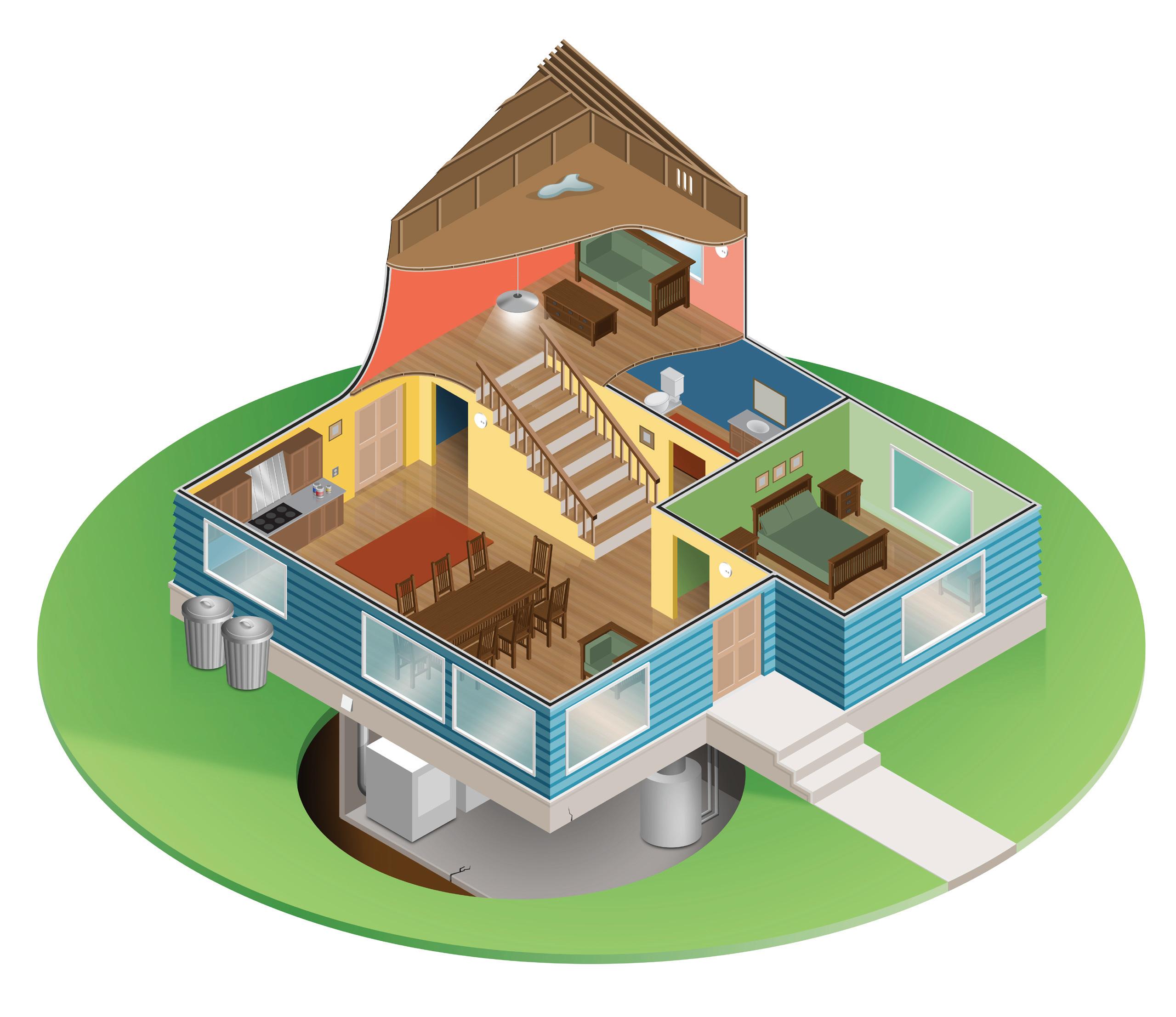A Healthy Home Checklist
Bedrooms, Living Rooms, and Family Rooms
[ ] Install smoke and carbon monoxide alarms
[ ] Do not smoke or allow anyone else to smoke in the home.
[ ] If your home was built before 1978:
[ ] Test your home for lead paint.
[ ] Fix peeling or chipping paint using lead-safe work practices.
[ ] Use safe work practices when painting, remodeling, and renovating to prevent spreading lead dust.
[ ] Keep floors clear of electrical cords and clutter.
Kitchens
[ ] Never use the stove or oven to heat the house.
[ ] Use a range hood fan or other kitchen exhaust fan that vents outside.
[ ] Install smoke and carbon monoxide alarms.
[ ] Use safe cleaning and pest control products.
[ ] Stop cockroaches, ants, and mice without pesticides:
[ ] Keep them out – seal openings to the outside and between rooms.
[ ] Starve them – put away food, clean up, cover the trash and garbage.
[ ] Deny them water – fix leaks and wipe up spilled water.
[ ] When necessary, use closed baits, traps, and gels.
[ ] Never use bug bombs.
Bathrooms
[ ] Install grab bars next to the bathtub and shower.
[ ] Use mats with nonslip rubber backs on bathroom floors.
[ ] Clean up moisture and mold safely.
[ ] Use a bathroom exhaust fan that vents outside.
Attics
[ ] Check for water leaks from the roof.
[ ] Ensure proper ventilation to prevent moisture that can promote mold growth.
[ ] Seal gaps around roofing and attic openings to keep rodents and insects out.
[ ] Clean up clutter to deny rodents and insects places to nest.
Stairways and Halls
[ ] Fix loose or uneven steps and rails.
[ ] Attach stairway carpet firmly to every step–or remove carpet and attach nonslip rubber stair treads.
[ ] Keep stairs free of clutter.
[ ] Install handrails on both sides of the stairs.
[ ] Keep a working light bulb in overhead lights in the hall and the stairs.
Everyone can have a healthy home. This checklist and accompanying illustration show some key action steps to take in each room and area of the home.
Basement, Crawl Space, Utility and Laundry Areas
[ ] Set hot water heater at 120°F to prevent burns.
[ ] Change furnace/AC filter regularly.
[ ] Have gas appliances and furnaces checked yearly to make sure they don’t release extra carbon monoxide.
[ ] Make sure the clothes dryer vents outside.
[ ] Test for radon. If there’s a high level, hire a specialist to eliminate the hazard.
Outer Parts of House and Yard
[ ] Keep pests away:
[ ] Fix holes, cracks, and leaks on exterior of the house.
[ ] Eliminate standing water and food sources.
[ ] Keep trash can covered with a lid.
[ ] Remove shoes before entering the house to keep dirt containing lead and other toxins outside.
[ ] Maintain gutters, downspouts, and roof to prevent moisture from entering the home.
[ ] Use safe work practices when painting, remodeling, or renovating a home built before 1978.
[ ] If you have a septic tank or private well, properly maintain it to prevent illness.
[ ] Be ready in case of disaster: have a kit for shelter in place and plan fire escape routes.
Special steps to protect children:
[ ] Make sure cribs, playpens, and play equipment are safe.
[ ] Keep cribs free of soft objects or loose bedding.
[ ] Use cordless blinds and shades, or tie the cords out of reach of children.
[ ] Place infants on their back to sleep.
[ ] Place safety covers on electrical outlets.
[ ] Lock prescription and over-the-counter medications away from children and use childproof caps.
[ ] Use stair gates at the top and bottom of stairs.
[ ] Lock up products used for cleaning, car maintenance, gardening, and pest control.
[ ] If you have a swimming pool, make sure you have proper fencing and gates around the pool.
[ ] Complete a playground safety checklist if you have playground equipment in your yard.
[ ] If a firearm is kept in the home, it should be stored unloaded and locked in a secure container— inaccessible to children.
Keep a working light bulb in overhead lights in the hall and the stairs.
Lock prescription and over-thecounter medications away from children and use childproof caps.
Lock up products used for cleaning, car maintenance, gardening, and pest control.
Place safety covers on electrical outlets.
Use a range hood fan or other kitchen exhaust fan that vents outside.

